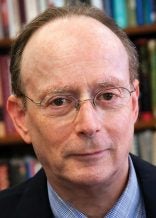In this season focused on the presidential election in America and amid much talk of the weak government in Jerusalem, it is only natural to think about what constitutes effective leadership.
So how would you rate the following characteristics?
Deep humility, an abiding reluctance to lead, bad temper, poor public speaking due to a persistent stutter, and on the lam from the law for having committed a serious crime.
Not too promising, admittedly, and yet Moses is still considered the greatest Jewish leader in history. That’s because, in addition to the qualities listed above, he was selfless, had a passionate commitment to his cause (of rescuing, caring for and defending the Jewish people) along with a grand vision, driven by Divine inspiration or intervention (or both, depending on your ideological beliefs).
But during an evening last week devoted to discussing effective models for innovation and leadership in American Jewish life today, the participants in the Berrie Fellows Leadership Program, administered by the UJA Federation of Northern New Jersey, seemed to agree that Moses might not get elected to the Knesset today. Jewish leaders now, they said, are more likely to require influence in the community, pragmatism, skills in cooperation, and wealth.
(Some 20 men and women between the ages of 35 and 49 take part in the two-year program, founded by the Russell Berrie Foundation, whose goal is to identify, recruit and train lay leaders in the Bergen County Jewish community.)
The panelists for the program, which I moderated, were three leaders who represented successful, but very different, models of innovation: Ruth Messinger, president of the American Jewish World Service; Michael Dorf, a musical entrepreneur (and a Jewish Week board member) who founded The Knitting Factory in Tribeca and, more recently, the Oyhoo Festival and Jewzapalooza; and Elie Kaunfer, co-founder of Kehilat Hadar, an egalitarian prayer and social action community.
Each spoke movingly about his or her own journey. Messinger, 67, explained how her passion for social justice took her into New York politics for 20 years — she was Manhattan borough president and the Democratic candidate for mayor in 1997 — and then led to her current post, which brings young people to Third World countries to do service as an expression of Jewish values.
Dorf, 45, told of coming to New York from Milwaukee at 23 and founding The Knitting Factory, where he and some musicians he featured, including avant-garde composer and saxophonist John Zorn and the Klezmatics, happened to discover a sense of Jewish identity together.
“I listened to [black clarinetist] Don Byron doing [the klezmer music of] Mickey Katz and found myself shaking my tuches,” Dorf recalled, describing the feeling as a primal connection to his Jewish roots.
Dorf has produced hundreds of music events and festivals, and in recent years has turned more to Jewish projects, including the upcoming 60@60 concert at Radio City in May in honor of Israel’s 60th anniversary, as well as launching a Hebrew school in Tribeca, where he and his family live.
Kaunfer, 34, son of a Conservative rabbi in Providence, R.I., became active at Harvard Hillel, later working as a journalist at the Jerusalem Post and as a corporate fraud investigator in New York. In the spring of 2001 he and two friends decided to create a minyan that combined traditional prayers with a more spirited approach in an egalitarian setting. That led to the founding of Kehilat Hadar, a prayer group on the Upper West Side known for its commitment to study and social action, which attracts large numbers of Jews in their 20s and 30s.
Now a rabbi, Kaunfer helped spearhead a movement of independent minyanim that has grown to about 45 around the country in the last seven years. He also directs Mechon Hadar, which includes the first independent egalitarian yeshiva in the U.S. and plans to expand from summer classes to full-time ones, so as to create better-educated lay leaders.
The Berrie Fellows sitting across the table clearly were impressed with the accomplishments of the panelists, but wondered if the kind of projects they heard described could succeed in the suburbs of New Jersey.
“You’re talking about Manhattan, where boutiques are popular,” one fellow noted, “but we shop in malls; it’s different here.”
Kaunfer said that while it is true there are far more singles in their 20s in New York City than suburban New Jersey, he challenged the fellows to create projects that meet local needs.
Don’t start a program because you think it will save the Jewish people, he said, but rather because there is a need for it, like allowing young men and women to have a role in expressing their interests.
“It’s not only about attracting others,” he said, “it’s about satisfying your own needs.” And you will find that those needs are often shared by others.
Kaunfer pointed out that even on the Upper West Side there was no Kehilat Hadar until he and his friends started it. “In other words,” he said, “even in the places where it seems obvious there is potential, that potential can go unrealized until a group of people take action.”
At evening’s end, one of the fellows observed that “the common denominator” for the three panelists was that “you each speak to emotional, spiritual needs,” qualities that younger Jews are seeking.
And it is true that while Messinger, Dorf and Kaunfer come to Jewish engagement from different places and interests, they share a sense of authenticity, vision and commitment — and an implicit message that each of us can make a difference.
Moses would have been proud.
The New York Jewish Week brings you the stories behind the headlines, keeping you connected to Jewish life in New York. Help sustain the reporting you trust by donating today.





